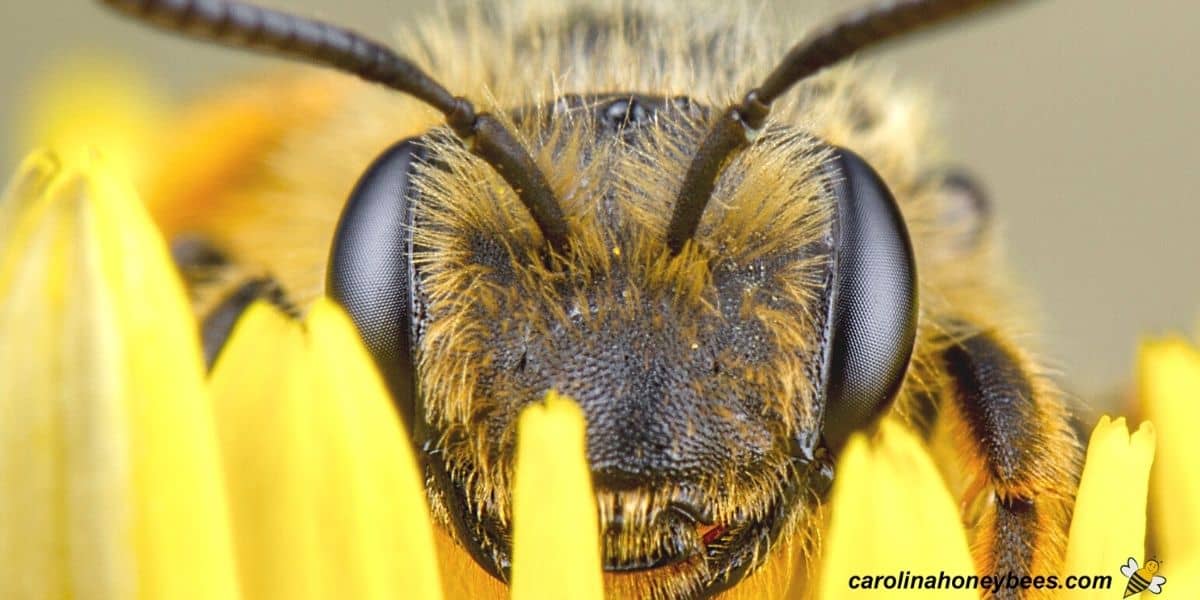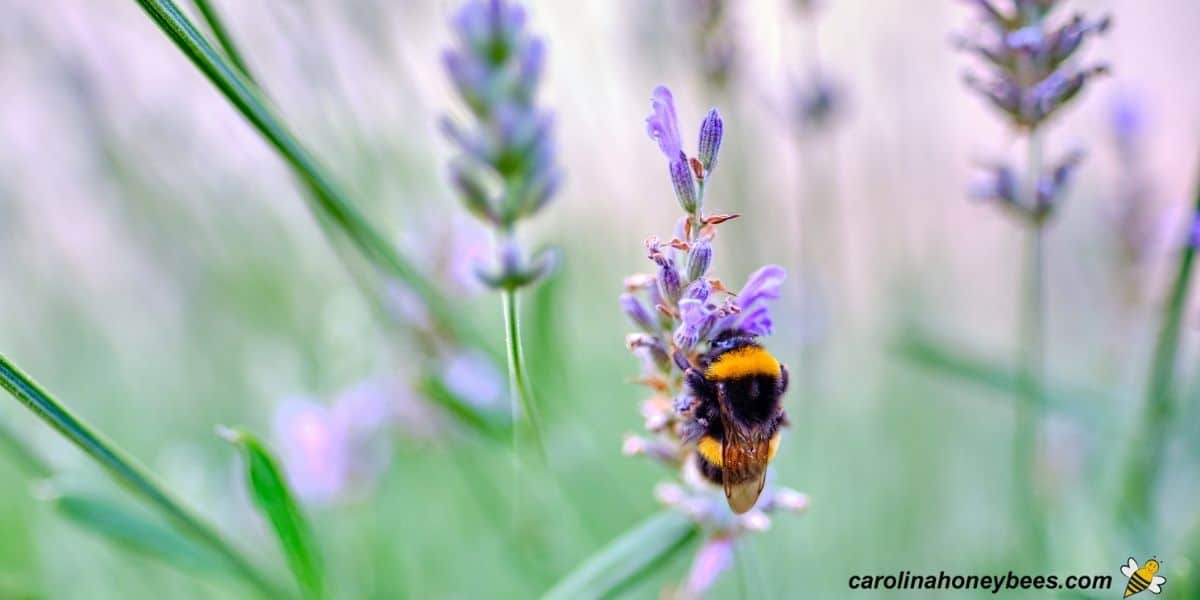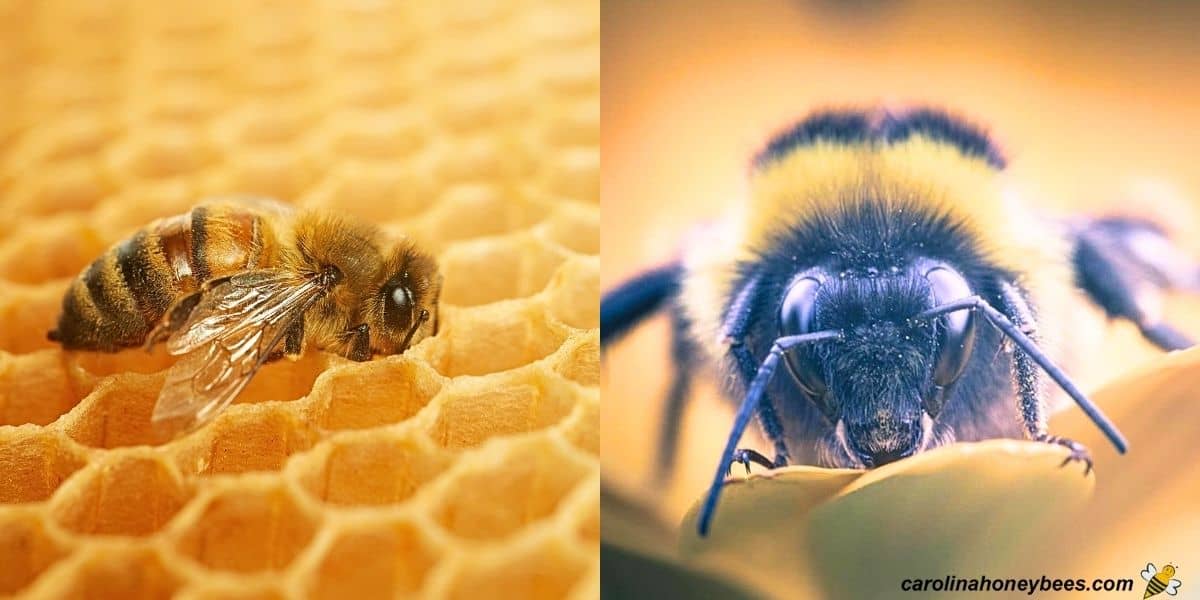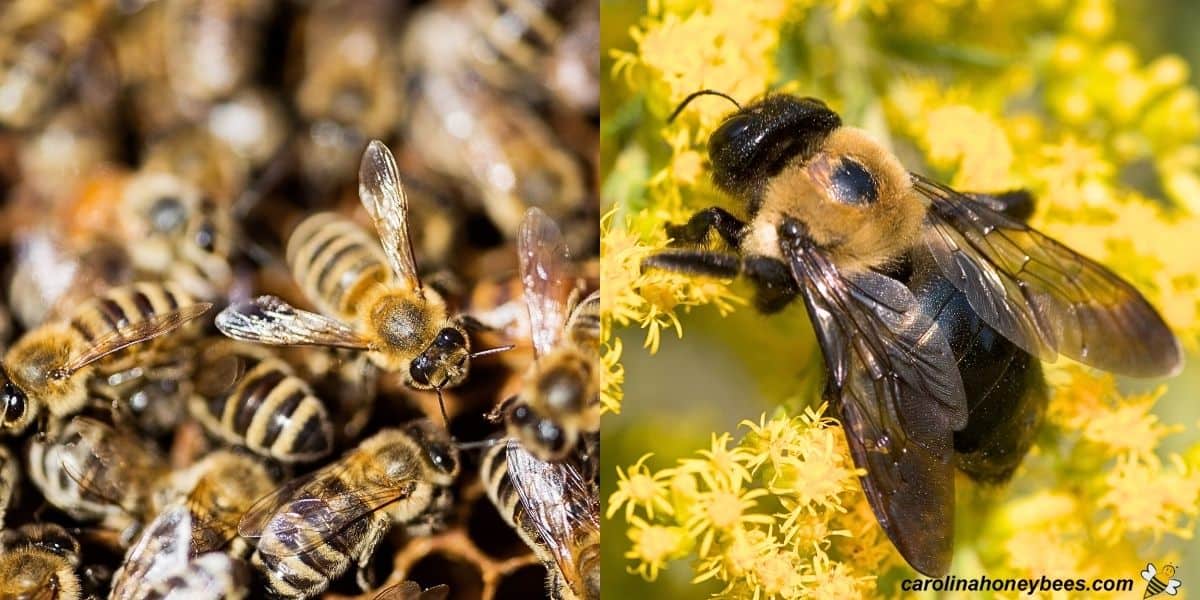Do Bees Sleep?
Bees are known for their diligent work ethic, but everyone needs some rest eventually, So, do bees sleep? Yes, surprisingly they do. Although the resting behavior of bees is quite different than what we humans experience – it is important to colony life. In this post, we will take a closer look at how sleep is a part of life for honey bees – allowing them to reach their highest potential.

When we consider all the amazing bee facts known about honey bees, it is easy to forget that all these actions have a purpose. As beekeepers, understanding the activities of bees and the “why” helps us understand them. The next time you open a hive, be very careful. There may be some sleeping bees inside!
Understanding Resting or Sleep in Bees
For many years, researchers did not believe that bees sleep. It was known that circadian sleep-wake cycles occurred in birds and mammals. But, this activity had not been observed in insects.
Then in the 1980’s a bee researcher named, Walter Kaiser made an exciting discovery. He observed that bees do have periods of rest similar to our sleep.
Kaiser was the first researcher to study and verify sleep in an invertebrate. He noticed that resting foragers would assume a similar stance.
Sleep Position
After a flexing of the honey bee’s segmented legs, sleeping bees would bring their head to the floor and their antennae would become very still. These inanimate workers would rest like this for various amounts of time.
In a beehive, similar activity was observed. Located at the edge of the comb where no brood was present bees were immobile. There was no reason for the workers to sit still – unless they were asleep/resting.
This post may contain affiliate links. As an Amazon Associate, I earn from qualifying purchases. Please read my disclosure.
Further experiments (Jurgen Tautz – Buzz about Bees) revealed that bees seem to go through various sleep stages as well.
Light sleep was common for some and longer periods of deep sleep were observed too. Those bees engaged in deep sleep required brighter lights to “wake them up”.
Though most bees passed through a sleep cycle. Unlike mammals, they experience deep sleep earlier in the sleep pattern rather than late

Where Do Bees Sleep?
For honey bees (Apis mellifera), their beehive or home is a very busy place. It is bustling with activity 24/7. Unlike many small towns, the honey bee colony does not stop work when dark arrives.
Why, well it’s rather dark inside the hive all the time! They do not depend on light to get work done inside. Busy sensory antenna, legs and other cues help them navigate the comb.
With all this hustle and bustle, where can a bee sleep? The tired worker has a few choices for a good place to catch a nap.
A bee in need of rest can choose a empty hexagon beeswax cell for a bed chamber. Or, she may choose a quiet section of comb away from the bustle of the brood nest.
Sleeping bees tend to be found resting on the outside edges of the comb where less activity is happening. While young honeybees take short “bee naps”, the older bees need longer periods of rest.
These older bees fly far away in the field and are expending more energy that most members of the colony. So, they need longer times of rest.
Do Honey Bees Sleep at Night?
Yes, honey bees do sleep at night. But. of course not every bee in the hive is asleep during the dark hours. Some continue colony tasks and rest during the day.
But, because they are busy during the day, most foragers rest and sleep at night. Valuable daylight is spent in the collection of needed hive resources.
Individually or in small groups-these sleeping bees are found along the perimeter or edges of the brood nest. Field workers sleep between 5 and 8 hours in a 24 hour period.
The older bees need more rest and sleep longer than younger adults. An article on the architecture of sleep (Eban-Rothschild, A. D. and Bloch, G. (2008) for younger honey bees explored this phenomena.

Resting Away from the Hive
Sometimes bees sleep away from the hive. Fatigued foragers can be seen sleeping on flowers. Motionless with head down and antenna still, they are catching a few zzz’s.
That is until something disturbs them. Then, the bee’s antennae are cleaned and away they go. However, most foragers sleep inside the hive at night.
They can not survive if their body temperature falls too low. Also, honey bees are very social and have a desire to be together with others in most situations.
Members of the colony with a special task may even have a “sleep over”. For instance, those serving as scout bees go out looking for new hive locations when a colony is preparing to swarm. They may spend the night at the new location before a swarm moves in.
Bumble Bees
Bumble bees like honey bees are also known to sleep outside. In fact, male Bumbles sleep outside once they mature and leave the hive for good.
Female Bumble bees sometimes get caught out if they delay returning to the nest before the air cools at sunset.
They rest in a relaxed posture on a flower. The next morning – once it warms, they fly back to their nest with pollen.

Why Sleep is Important for Bees
With thousands of individuals working together for a common goal, communication is vital. Honey bees have several methods of communication.
They use sight and scent when outside gathering food. Bee pheromones inside and outside the hive help communicate the needs of a colony.
Well rested bees do a better job of navigating back to the hive and learning new foraging routes. For instance, honey bees have a unique way of communicating the location of food sources thru dance.
Sleep Deprivation Affects Dance Moves
The special bee dance language involves a series of wiggle, waggles and circular motions that angle across the comb.
Only worker bees who are foragers participate in dancing. They bring back samples of good food sources. Then, they dance to direct their sisters to the nectar or pollen – an important protein source.
The dance movements expressed by the dancers provide a lot of information. The direction (from the hive) and approximate distance to the new food source is revealed.
Well-rested foragers give the best directions when communicating through dance. This knowledge prevents a lot of unnecessary flying around to search for resources.
Since bees can travel several miles in search of nectar or pollen, this represents a sizable savings of energy. So, the colony is able to maximize food collection.

Sleep-Deprived Bees Are Sloppy Communicators
In studies, where bees were kept busy and not allowed to sleep or rest, their performance noticeably declined in several skill sets. Characteristics of lack of sleep:
- dance accuracy was lessened – (especially the waggle dance)
- memory issues were noticeable
- bees found learning new things more difficult
Worker bees that have had no time of rest or sleep for extended periods did not dance as well. Their communication was sloppy.
Sleepless bees also performed poorly on other sensory response tests. This sounds very similar to humans doesn’t it?
Memory also suffers in a sleep-deprived bee. Fatigued workers had a harder time finding their way back to known food sources.
They spent much more time in orientation flights etc, than their rested sisters. Foraging trips took longer to complete.
Bees with no sleep had difficulty in learning new things. Responses and tasks that would normally be easy took longer to finish.

How to Tell if Bees are Sleeping
Can we prove that bees really sleep? Well, I guess that depends on how you define sleep. They certainly don’t wear pajamas, climb into bed and close their little honey bee eyes. Um… bees don’t have eyelids, ya know.
But bees do exhibit some sleep characteristics similar to ours. They engage in periods of immobility. With heads down in a relaxed manner, the antenna droop, the thorax drops and their abdomen relaxes as the wing lay on the back.
Also, when in this state, an increased stimulus is necessary to elicit a response. These are also characteristics of sleep in mammals. Who says they have to close their eyes to sleep?
FAQs
Yes, queen bees do sleep or rest but in a different manner than other bees in the hive. Because of her duty of laying eggs, her periods of rest are more numerous shorter intervals than than of the work force.
There is no evidence to confirm that bees dream while sleeping. However, they do pass through sleep cycles – so who knows?
The entire honey bee colony can be affected if a large number of bees are suffering from lack of sleep. Efficiency drops and the colony is not as productive.
Solitary bees, like leafcutter bees, sleep differently than honey bees. Since they don’t live in colonies, they often sleep in their nests or inside flowers. Social bees, such as honey bees, have more structured sleep patterns.
Finally
Inside of a beehive, bees may appear to hold hands (or hold feet) while they are in the sleeping pose. These hard working honey bees needs times of rest and sleep in order to function well in the colony. As we develop a better understanding of them and other insects, we are better prepared to appreciate and protect them.

